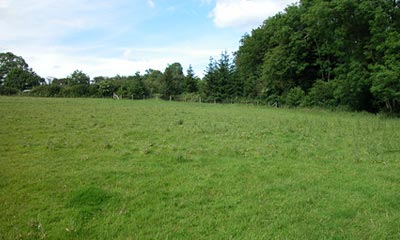The future of the green belt: what are the options?
A strong preference for green belt policy to be updated was voiced at a recent RTPI conference.
Last May witnessed the publication of three policy statements to promote debate on the future of green belt, from RTPI, the Country Land and Business Association and the TCPA. A recent conference allowed a packed house to hear the views of a range of speakers and to debate the issues.

The review the Institute has initiated, the response of members and the resulting statement Modernising Green Belts were outlined by RTPI Policy Committee chair Ron Tate. The problem areas are seen to be:
- The failure of Green Belts to keep pace with the changing planning policy agenda of recent years.
- The public perception of the role and purpose of Green Belts being out of step with realities.
- The conflicting aims and objectives in the application of Green Belt policy
Particular problems arise from implementing the sustainable development agenda. For example, cutting down the need to travel, reuse of brownfield land and meeting housing needs in optimal locations is often at odds with the strict prohibitions of green belt policy on the urban fringe. It is accepted that green belt policy is probably the planning tool best known by the general public but it is also probably the least understood. Rather than being a tool to protect countryside it is a regional strategic planning tool, to fit within the sustainability framework and economic and regeneration objectives. As such, its shelf life should be that of the strategy (20 years), to be reviewed with the strategy.
The Country Land and Business Association recognises the importance of preventing urban sprawl and achieving sustainable development, said its senior planning adviser Mark Jones. However, sustainable development aims should also be met within rural areas, and current guidance on Green Belts does not provide a framework to achieve this. Rather, it leads to skewing of development, increased travel distances, and failure to address relevant local needs. Businesses and communities in Green Belt are not benefiting from the new broader countryside policies that address social, economic and environmental needs. The Association does not wish to abolish Green Belts but is calling for a change in policy, which embraces:
- The continuing role of agriculture and horticulture in Green Belt, including farm diversification.
- The need for rural economic and social development to achieve regeneration of the rural economy.
- The need for rural housing to meet local needs.
Bristol based consultantJohn Baker was less kind to green belt policy. He considers that it is bad policy that should go. It prevents the planning system operating as it should, acts to inhibit the achievement of patterns of development we seek and prevents the real dialogue needed to resolve planning issues in ways that carry public confidence.
Green belt policy is popular and persistent because it provides a simplistic and powerful development control policy, but its original role was strategic planning and the selection of land for development. The myth that we cannot abolish Green Belt because there is nothing to replace it was dispatched. On the contrary, the alternatives are suppressed by Green Belt policy. We need a positive, influential and effective form of planning with development plans taking the central role.
The history of restrictive planning policies that have been applied to Cambridge over the last 50 years was outlined by Councillor Nichola Harrison. She focused in particular on Green Belt policy, and the economic growth that has occurred despite these policies. The adverse effects have been the predictable economic, environmental and social impacts of policies that disperse growth away from the urban area and create housing shortages and high prices, labour shortages especially in public services, traffic congestion and other environmental damage. Is Cambridge now a dysfunctional city, she asked?
Councillor Harrison went on to examine the new thinking and policy framework that is opening up new opportunities for urban renaissance and sustainable development. This is translating into a new vision for the city and sub-region involving an expansion of up to 18,000 homes in the Green Belt on the east side of the city, which will allow it to become a model for sustainable development in the UK.
From experience, consultant Jenny Hubbardspoke about the tortuous route to designation of a Green Belt for York, which was first commissioned in the late 1950s but has yet to be adopted. Several local government reorganisations have delayed the process but how far, she wondered, has the need for the designation changed over the past 50 years? Will the emerging boundary serve a useful purpose, given sustainable development objectives and alternative policies available? Hubbard outlined the frustrations of consultants and developers attempting to operate for decades with a draft designation and without the chance to challenge the philosophy in local plan inquiry.
The issue of mechanisms for environmental improvement within Green Belt was discussed by Kent's former Assistant County Planning Officer Chris Waite. Kent Green Belt has had to accommodate a long stretch of the Channel Tunnel Rail Link. This intrusion was assessed by an environmental impact assessment and impacts mitigated as part of the scheme. However, the opportunity also arose for local bodies to access funds for local environmental schemes. These included compensation for damage to ancient woodland and a listed park, plus extension to a country park and the promotion of a new country park.
A straw poll of delegates indicated a strong preference for Green Belt policy to be reviewed and updated. PPG2 may not be inviolable!
News in Planning - Issue 1509, 07.03.2003
